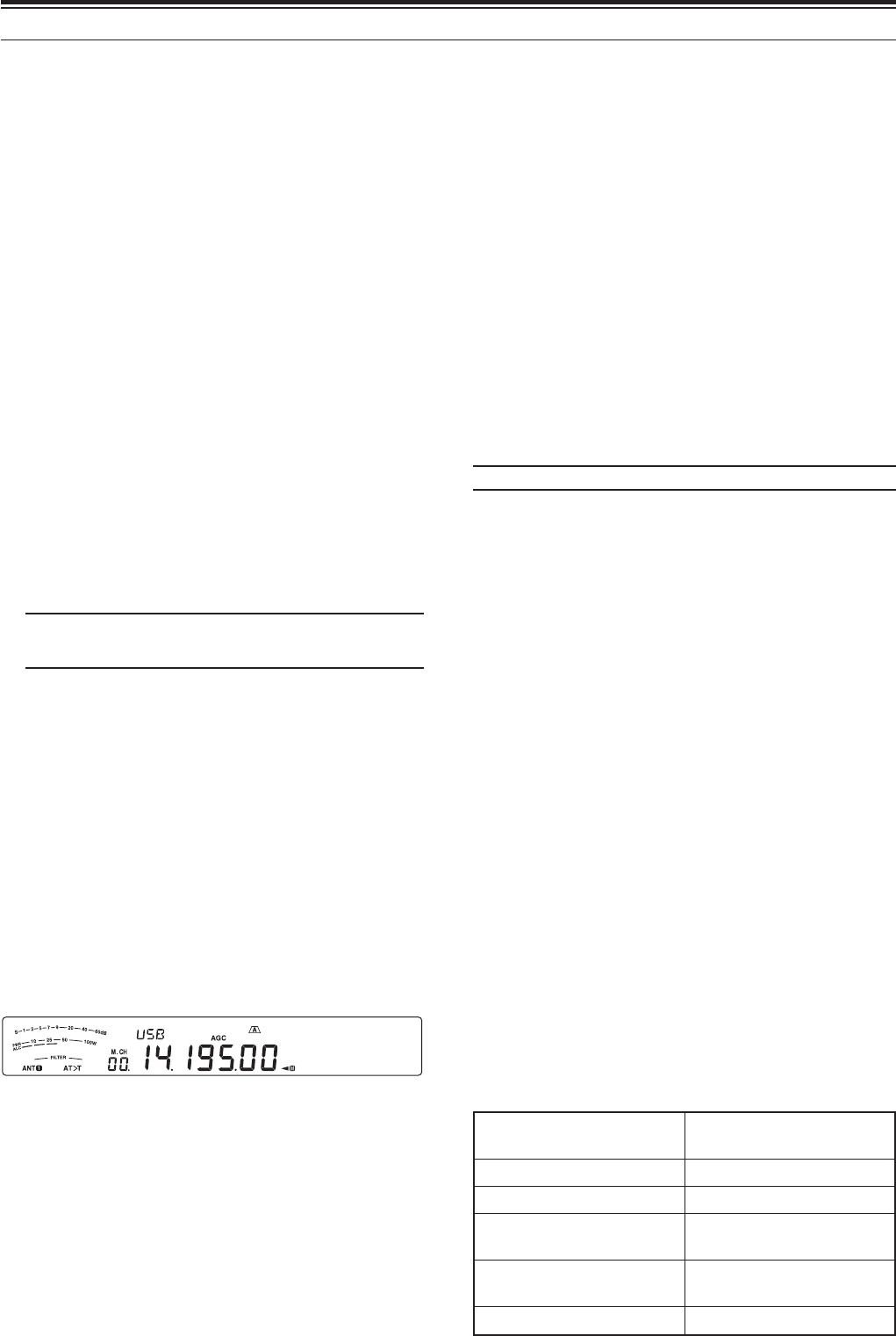
44
0(025<)($785(6
Q &RQILUPLQJ6WDUW(QG)UHTXHQFLHV
Use this procedure to check the start and end
frequencies that you stored in channels P0 to P9.
1 Press [M>V] to enter Memory Recall mode.
2 Turn the MULTI/CH control or press Mic [UP]/
[DWN] to select a memory channel from P0 to
P9.
3 Press [A/B (A=B)] to check the start frequency,
then press [A/B (A=B)] again to check the end
frequency.
Q 3URJUDPPDEOH9)2
Using the start and end frequencies that you stored
in channels P0 to P9, Programmable VFO restricts
the frequency range that you can tune with the
Tuning control. One application of this function is
to help you operate within the authorized frequency
limits of your license.
1 Press [M>V] to enter Memory Recall mode.
2 Turn the MULTI/CH control or press Mic [UP]/
[DWN] to select a memory channel from P0 to
P9.
You can now only tune from the start frequency to
the end frequency, using the Tuning control.
Note: Pressing Mic [UP]/ [DWN] or turning the MULTI/CH
control changes the memory channel number while in
Programmable VFO mode.
0(025<&+$11(//2&.287
You can lock out memory channels that you prefer
not to monitor during Memory Scan. Memory Scan is
described in the next chapter {page 48}.
1 Press [M/V] to enter Memory Recall mode.
2 Turn the MULTI/CH control or press Mic [UP]/
[DWN] to select the desired memory channel.
3 Press [CLR].
• Do not hold down the [CLR] key. Holding
[CLR] for more than approximately 2 seconds
will erase the contents of the memory channel.
• A dot appears beside the right-most digit of
the memory channel number to indicate the
channel has been locked out.
• Repeatedly pressing [CLR] toggles between
adding and removing the channel from the scan
list.
(5$6,1*0(025<&+$11(/6
If there are memory channels that you will not recall
in the future, you may prefer erasing the contents of
those channels.
1 Press [M/V] to enter Memory Recall mode.
2 Turn the MULTI/CH control or press Mic [UP]/
[DWN] to select the desired memory channel.
• You can also select a channel by entering a
2-digit number. Press [ENT], [7 (3)], [10 (4)]
for example.
3 Press and hold [CLR].
• A long beep sounds to confirm that the channel
data has been erased.
0(025<&+$11(/1$0(
You can assign a name to each memory channel, with
a maximum of 8 alpha-numeric characters.
Note: You cannot name the Quick Memory channels.
1 Press [M/V] to enter Memory Recall mode.
2 Turn the MULTI/CH control or press Mic [UP]/
[DWN] to select a memory channel.
3 Press [Q-MR].
4 Turn the MULTI/CH control to select the desired
alpha-numeric character. You can move the
cursor to the left by pressing [Q-M.IN], or to the
right by pressing [Q-MR]. Press [CL] to erase the
character at the cursor.
5 After selecting all the necessary characters for the
memory channel name, press [MENU] to store the
name.
6 When you recall a memory channel with a name,
the name is displayed on the sub-display along
with the memory channel number.
48,&.0(025<
Quick Memory is designed to quickly and temporarily
save data without specifying a particular memory
channel. Use Quick Memory to store data you will not
use in future operating sessions. For example, as you
tune across the band looking for DX, it is convenient
to store stations that you want to contact. You can
quickly jump between several different memory
channels as you monitor them.
Quick Memory channels can store the following data:
VFO A frequency and
operating mode
VFO B frequency and
operating mode
RIT ON/ OFF XIT ON/ OFF
RIT/ XIT offset frequency FINE ON/ OFF
Noise Blanker ON/ OFF DSP Beat Cancel
OFF/ 1/ 2
DSP Noise Reduction
OFF/ 1/ 2
IF Notch
DSP filter bandwidth Simplex/ Split
